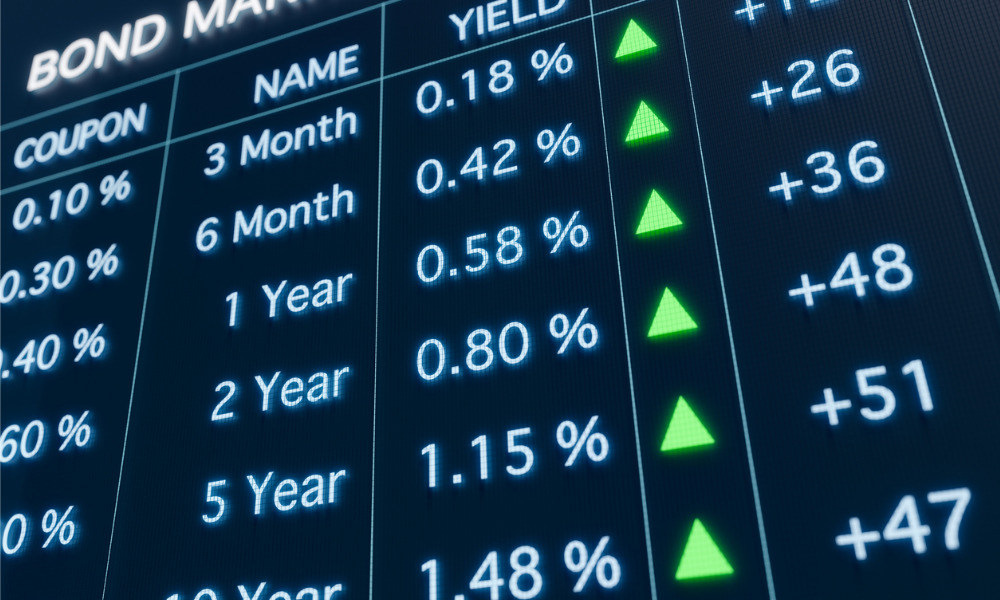

US Treasuries held small losses after Federal Reserve Chair Jerome Powell affirmed that the central bank favors delaying additional interest-rate cuts.
“We know that reducing policy restraint too fast or too much could hinder progress on inflation,” Powell said in prepared testimony for the Senate Banking Committee. His remarks echoed the message he delivered Jan. 29, when the Fed paused after cutting rates three times last year.
Treasury yields, already higher by as much as four basis points before Powell’s first day of congressional testimony began at around 10 a.m., remained near those levels. The US 10-year yield climbed nearly five basis points toward 4.55%, extending its rebound from last week’s 2025 low of 4.38%. A gauge of the dollar held steady after two days of gains.
“The Fed is on pause until future notice,” said George Catrambone, head of fixed income at DWS Americas. “Powell still has trouble publicly reconciling their pause with his confidence in overall policy restrictiveness. He won’t be able to do that dance forever, especially in the back half of this year if inflation hasn’t come down further.”
Money markets continued to fully price in just one quarter-point rate cut by the central bank this year, by September. In December, two 2025 cuts were priced in. A strong January jobs report released Friday prompted reassessment of the policy outlook, and January inflation data to be released Wednesday could do the same.
Speaking earlier Tuesday, Cleveland Fed President Beth Hammack said it’s appropriate to keep interest rates steady for “some time” while policymakers await further downward progress on inflation and analyze the economic effects of new government policies.
Longer-maturity Treasury yields have climbed since US President Donald Trump was elected in November, partially on speculation that the trade protectionism he campaigned on could prove inflationary.
At the same time, administration officials have said they want lower yields on 10-year Treasuries — which are set by the market and reflect expectations for growth and inflation — and aren’t seeking cuts to the overnight interest rate set by the Fed.
The 10-year yield climbed to around 5% in 2023, the highest level in 15 years, amid a surge in inflation, and has remained above 3.6% since then.
“If the administration seeks lower 10-year yields they should focus less on tariffs and more on fiscal policy,” Catrambone said. He expects the 10-year to remain in a 4.25% to 4.75% range.
The rise in yields, if sustained, will mean higher returns for buyers of this week’s three Treasury note and bond auctions, beginning with $58 billion of three-year notes at 1 p.m. and followed by 10- and 30-year issues over the next two days.
The new three-year notes had yields around 4.32% in pre-auction trading, up from as low as 4.18% when the sales were announced last week.

The looming threat of federal funding cuts to state and local governments has lawmakers weighing a levy that was phased out in 1981.

The fintech firms' new tools and integrations address pain points in overseeing investment lineups, account monitoring, and more.

Canadian stocks are on a roll in 2025 as the country prepares to name a new Prime Minister.

Carson is expanding one of its relationships in Florida while Lido Advisors adds an $870 million practice in Silicon Valley.

The approval of the pay proposal, which handsomely compensates its CEO and president, bolsters claims that big payouts are a must in the war to retain leadership.
RIAs face rising regulatory pressure in 2025. Forward-looking firms are responding with embedded technology, not more paperwork.
As inheritances are set to reshape client portfolios and next-gen heirs demand digital-first experiences, firms are retooling their wealth tech stacks and succession models in real time.
